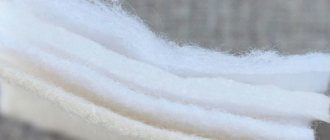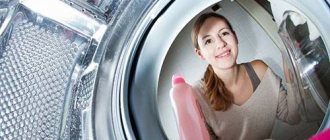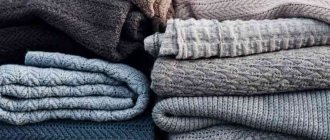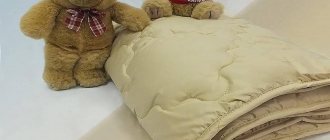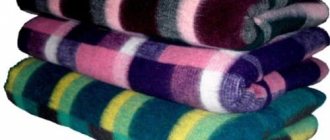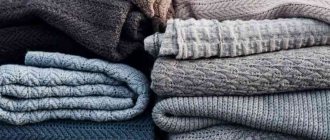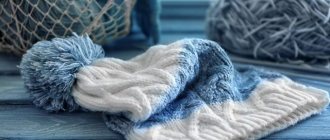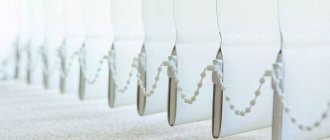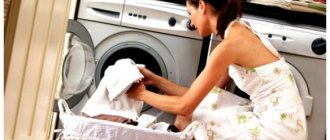When a child appears, parents have many questions. One of them is how to properly wash soft toys. Often the baby carries his soft friend with him everywhere, tastes him, drops him on the playground, and then tries to put him to bed with him. Meanwhile, dust, microorganisms, and mites accumulate on the surface of the toys, which can cause allergic reactions in the child. To protect your baby from contact with contaminants, it is important to pay special attention to the hygiene of soft toys.
Soft toys are constantly near children, so it is very important to keep them clean
Why do you wash soft toys?
Stuffed animals need washing because they are dust magnets. Warm room temperature (from 22 degrees), high humidity (from 55%), a large amount of dust - a pleasant atmosphere for the emergence and reproduction of dust mites.
Parasites can cause diseases of the mucous membranes, skin, and respiratory tract. Some forms of disease are so severe that the best option would be to take proactive measures to combat dust in toys.
It is recommended to clean soft pets at least once every 2 weeks, depending on the degree of contamination.
Preventing contamination of soft toys
Preventative measures against pollution include methods of their operation. It is difficult to explain to children that a bear or a bunny does not want to lie on the floor, and even in an embrace with a pet.
Simple hygiene rules will not save you from contamination; in any case, you will have to clean or wash it at least once every 3 months. Don't wait for stains to appear and dust to accumulate. A child’s health is more valuable than the hassle of caring for his favorite toys.
The child should be taught to wash his hands regularly and treat soft toys with care. The rest is up to the adults.
Washing methods
Nowadays, there are many methods for washing toys. You can find out whether soft toys can be washed in a washing machine using the label attached to them. Usually the manufacturer writes not only about the method, but also indicates the optimal temperature regime.
It is necessary to choose the correct washing method to avoid deformation of the material, as well as loss of color.
Handwash
Hand washing is the most gentle method and is suitable when the item does not contain a washing label. Consistent instructions will tell you how to properly clean your soft friend:
- Pour warm water into a basin, the temperature of which is 30 degrees. If the plush figurine still has a label with the specified temperature, then you should give preference to it. The water level should be such that the object being washed is completely immersed in it.
- Wet your soft pet and soap it with powder or soap.
- Dip the product in water and leave it in it for 30-60 minutes.
- After time has passed, rub it with a clothes brush, if the material of the product allows this, knead it in your hands, squeezing out the remaining dirty water.
- Rinse several times until the water runs clear.
- Place it on the dryer, leave it in the sun outside, or place it near the radiator in a horizontal position.
Surfaces on which things are dried should be treated with antibacterial agents.
Machine washable
Machine washable only for those products that indicate this on the label. If there is no tag, then you should use these tips that will consistently tell you how to wash toys in a washing machine:
- Conduct an experiment to check for color loss after washing. To do this, apply alcohol to a bandage or cotton pad and apply it to the fabric in the most inconspicuous place. After 5 minutes, look at the results. If there are stains left, then machine washing is contraindicated. Toys that can be washed do not cause this reaction.
- It is recommended to immerse small items in a washing bag. The same goes for those toy items that have long pile.
- Select the delicate mode if the tag does not indicate which program to wash on. A gentle method will avoid fabric shedding.
- Do not spin at more than 600 rpm. Otherwise, the child will have to play with a very rumpled friend.
- Use the extra rinse function to reliably remove soap residue.
- Place in a horizontal position on the dryer, with a container underneath to collect the draining water.
Watch a detailed video about washing toys in a washing machine:
Cleaning
Some toys cannot be washed with water. For them, cleaning methods are provided using a dry method or using foam.
If your plush friend contains a large number of microcircuits that are quite difficult to remove, then you should only clean it using the dry method. To do this, you need to equip a vacuum cleaner with a special brush for cleaning furniture. With slow suction mode, you can get rid of dust and visible dirt.
Furniture cleaning foam is perfect for restoring the toy's clean condition. Many manufacturers of washing powders produce similar products. It can be replaced by a regular soap solution that can hold persistent foam. A regular sponge will help remove dirt. Excess moisture should be removed with a microfiber cloth.
The nuances of hand washing
Many mothers decide to wash toys by hand, since this method is considered more delicate and gentle. Follow these steps in the following order:
- Pour a sufficient amount of warm water into the basin (about 30–35 degrees).
- Place a toy in the basin.
- Lather it with soap. If you are using powder, gel or shampoo, first prepare a soap solution.
- Leave for 10-15 minutes.
- Then carefully remember the toy from all sides.
- If any stains remain, gently scrub them with a brush. Be careful as some fabrics can be easily damaged. Grease stains should be wiped with a cloth soaked in ethyl alcohol or dishwashing detergent.
- Rinse the product in clean water. Change the water several times to rinse the detergent thoroughly.
After hand washing, it is important to dry the toys properly. It is impossible to squeeze them out well by hand, so you should first lay them down or sit them on a horizontal surface so that the water drains out as much as possible. Then you need to hang it to dry over a radiator or other heat source.
How to restore a toy after washing
An important step in caring for a toy is restoration after washing. Initially, it is worth remembering that you should dry your child’s soft friends only in a horizontal position. This way, all the water will drain from them without additional squeezing, which can lead to damage to the material.
Do not hang play items on clothespins, especially knitted toys. The yarn can stretch under the weight of the filler, which will lead to distortion of the pet's shape. It is best to dry knitted items on a terry towel.
Long hair on soft pets should be combed using a regular comb. To speed up the process, it is recommended to use a hairdryer to dry the fibers on the toy.
If the filler was removed before washing, the fabric “skin” can be ironed after drying. Toys should be ironed in the same way as clothes made from similar materials.
Proper drying of toys
Even after careful washing, there is a risk of damaging toys due to improper drying. Intensive spinning in an automatic machine can damage your plush pets, and with manual spinning, the filling can rot or mold if it remains wet for a long time. After washing, thoroughly wring out the product and place it on a drying rack or terry towel. When all the water has drained, hang them in a warm, dry room or in the fresh air. Products knitted or sewn from natural fabrics cannot be hung - they can stretch out greatly. It is advisable to comb and fluff up animals with long fur with a hairdryer. Straighten the matted lint with a soft brush.
When drying, avoid direct contact with heating devices. Some toys need to be shaken while drying to evenly distribute any clumps of filler.
Products for washing and cleaning soft toys
To care for soft pets, you should choose products that are suitable for the child. It is important to remember that if your baby is allergic to any cleaning products, then using them for cleaning is prohibited.
It is recommended to take only natural baby powders and soaps. Be sure to rinse the product several times to remove any remaining cleaning agent.
When washing toys with long piles, it is best to use fabric softener. This will preserve the quality of the product for a long time.
To preserve color, add ½ tsp to the powder. citric acid. A solution of lemon and warm water helps get rid of yellow spots on the surface of the product. And ethyl alcohol does an excellent job of removing grease stains.
Starch or baking soda are suitable for dry cleaning. These products are less likely to harm the child, but you should carefully remove residues from the surface with a brush to avoid allergic reactions.
Watch the video and a simple DIY home remedy for washing toys (don't forget to rinse well after the process):
Features of washing toys with a music block and glued parts
Simple musical toys can be washed if the mechanism is temporarily removed. Open the product, remove the electronic unit and sew up the hole with large stitches so that the filling does not come out during washing. But with a walking specimen, stuffed with electronics from head to toe, you will have to limit yourself to dry cleaning.
Glued eyes, noses, and decorative plastic decorations may come off when machine washed. This will ruin the appearance of the product and may damage the washing machine. To avoid such problems, it is advisable to wash by hand, or at least use protective bags made of fine mesh.
How to wash a large toy
Large toys with fillings are available not only for children, but also for adults. Washing such a pet is not an easy task. There are several ways to solve this problem.
The easiest way is to take your plush pet to the dry cleaner. The workers know how to properly wash large toys in order to return them to the owner in proper condition.
The second method requires physical effort. You will need to put a large toy, for example, such as a shark from Ikea, in a bag, adding 1 cup of starch or soda to it. Then you need to securely tie the polyethylene and shake for 20-30 minutes, knocking out the dust. Subsequently, the soft animal is removed, and the remaining cleaning agent is removed from it using a regular clothes brush or vacuum cleaner.
The third washing method seems simpler, but laborious. To begin with, you should rip the toy apart along the seam, removing the filling from it. Then the fabric needs to be immersed in a washing machine or washed by hand. After drying, hammer the inner component back into the fabric, sewing it neatly along the seam.
How to clean a soft toy that can't be washed
When a product cannot be washed, this is not a death sentence for a soft pet. In practice, other types of cleansing are used, which reveal the secrets of several additional ways to cleanse a pet, without immersing it in water.
Wet cleaning
Wet cleaning involves applying thick foam from baby detergent to the toy and then removing it. This way you can “wash” the toy at home.
The process follows the following chain:
- A small container is being prepared.
- Fills with warm water.
- Add baby shampoo or other safe soaping agent.
- Thick foam is whipped up.
- Using a clothes brush, apply foam to the product and clean the toy with light movements.
- Using a damp microfiber cloth, remove any remaining foam.
More often this method is used for pets filled with small balls.
Dry cleaning
For dry cleaning requires the use of a vacuum cleaner or baking soda.
For the first method, use a vacuum cleaner with a furniture attachment with a tapered end. This method will cleanse dirt and remove small parasites.
For the second method you will need baking soda, a plastic bag and a vacuum cleaner. Place a plush toy in the bag and add baking soda. Tie the bag tightly and shake vigorously for 5 minutes. Then take out the toy and vacuum it.
Dry cleaning
Dry cleaning is not a cheap method of removing dirt from children's pets. The price category increases due to possible additional services, such as adding shine to parts of your pet’s clothing or treating them with a silver solution, which will allow you to be calmer about subsequent contamination of the pile.
It happens in life that a product after dry cleaning does not have its previous size, shape or bright color, but the customer of the service is notified about this in advance.
How to wash toys with different fillings
It is usually not only the outer fabrics of the product that complicate the washing process and choose its method, but also the internal filling. Different fillers require a special approach to cleaning. Otherwise, the risk of product deformation increases.
To develop fine motor skills of the hands, manufacturers produce anti-stress toys with small balls. The difficulty of washing is that such a toy cannot be placed in a washing machine. Only hand washing will help prevent the seams from unraveling and the balls from rolling out.
Soft friends with batteries, as well as microcircuits that allow them to reproduce voices, require careful attention to themselves. They should not be allowed to come into contact with water, otherwise the toy device will become unusable. An easier way would be dry cleaning with a vacuum cleaner, which will not harm the microcircuits of musical toys.
Funny characters filled with synthetic padding polyester and foam rubber can be washed without the seams bursting. In this case, you must remember about the delicate washing mode. If the product is large, then the inner material must be removed and then washed separately in a bag, which will allow you to avoid losing pieces of the filler.
At what temperature and what should I wash with?
It is recommended to wash children's toys at a temperature of 30–40 degrees, but in general, you need to study the label and recommendations from the manufacturer and not exceed the recommended values. Some products can even be immersed in hot water (about 60˚C). The advantage of washing in hot water is that many harmful bacteria are killed. You can fight germs in other ways, but more on that later.
To wash children's soft toys, you can use the following detergents:
- Baby powder. You can use the same powder that you use to wash baby clothes.
- Baby soap. Safe detergent but may not remove stains.
- Laundry soap. An affordable product that copes well with any type of dirt. Use with caution when washing snow-white items as they may turn yellow.
- Shampoo. If you are washing toys for a child under three years old, it is better to choose baby shampoo.
- Detergent for washing delicate items. Buy a suitable product for white or colored items in the form of powder, gel or capsules. This option should be used if the children are already grown up.
When rinsing, you can use conditioner, but choose a product for children's clothes. It will maintain softness and fluffiness, and also add a pleasant aroma.
Note! Detergent is often difficult to remove from toys. Since the child is in close contact with them, it is important to select hypoallergenic detergents.
Features of washing during quarantine
During quarantine, the issue of disinfection is especially pressing. Soft friends can become carriers of dangerous viral diseases. To prevent infection, you should pay special attention to washing toys.
It is recommended to use cold or heat for disinfection. Hot steam from an iron or steamer is suitable for this. It is enough to direct a stream of steam at the toy and wait a few minutes to destroy pathogenic bacteria.
A regular freezer does a great job of killing germs. This is how people have been fighting dust mites for a long time. The soft friend needs to be placed in a bag and then placed in the freezer overnight. Once removed, the safety of the soft product is guaranteed.
A quartz lamp will be an excellent helper in everyday life. Ultraviolet radiation helps to reliably get rid of various types of bacteria.
Under no circumstances should you use bleach. This product will not only destroy germs, but will also harm the child’s health.
During the quarantine period, it is recommended to wash soft toys at least once every three days. It is worth choosing the maximum or minimum possible washing temperatures. After the procedure, you should treat your plush pets with boiling water.
Proper drying of plush toys
An important point in successfully cleaning products is the correct approach to drying. For best results you should:
- Place items to dry only horizontally.
- It is advisable to use a grill that allows excess moisture to drain.
- It is not recommended to hang toys on clothespins.
- Products should be dried in a well-ventilated area with moderate humidity.
- You should absolutely not place toys near heat sources or in the sun.
You can wash soft toys in an automatic washing machine; the main thing is to follow the cleaning recommendations indicated on the product label.
What toys cannot be washed
Many toys cannot be washed either in a machine or by hand. This is explained by the characteristics of the materials from which the product is made. The summary table contains information about whether toys with certain features can be washed:
| Peculiarities | Prohibited washing method | Care instructions |
| Contains glued parts - bows, eyes, nose, mustache, ribbons | In the washing machine | Hand wash without spinning. |
| The product has plastic inserts | In the washing machine | Machine wash in a special bag (not recommended, as parts may come off, but if they are in a bag, they are easy to assemble). The best way is to wash by hand. |
| Made from natural fabrics | In the washing machine | Wash by hand at a water temperature of no more than 30 degrees. Do not squeeze. |
| Contains organic filler - feathers, sawdust, buckwheat husks | Any wet wash | Avoid contact with water. Use a vacuum cleaner to remove dust. |
How to dry soft toys correctly
For each soft toy, the drying mode should be selected individually. It depends on the size and materials from which the product is made.
Large samples can be laid out to dry on a wire rack, and smaller ones can be hung on a clothesline. To make drying as fast and efficient as possible, it should be done outdoors with access to sunlight.
The best drying method is open air with access to sunlight.
When it is not possible to dry outside or on the balcony, toys should be placed near heating appliances in a room with good ventilation.
Drying process
We have discussed how to wash soft toys, and now after basic cleaning and additional rinsing, they should be dried well. It is best to do this manually in order not to spoil the soft material. There are also toys with external knitted material. They require a special approach, since they are the ones most susceptible to deformation during drying. The fact is that such things cannot simply be hung on a rope; they should be laid out on a horizontal surface. The most optimal way would be to put an additional towel under the plush animals, after straightening them out and giving them their original shape. All you have to do is wait for it to dry completely.
There is another method to effectively dry plush toys - place them near the radiator. The fact is that the heat emanating from the battery will dry them out much faster and this will in no way affect the external material.
Often, after drying, pellets form on the toy, but there is no need to panic - they can be easily removed with a blade or use a special machine for this.
If hanging drying is allowed, this should be done on a balcony or in a well-ventilated place with constant access to direct sunlight. The fact is that in this way the toy will not only dry, but also ventilate and get rid of foreign odors.
